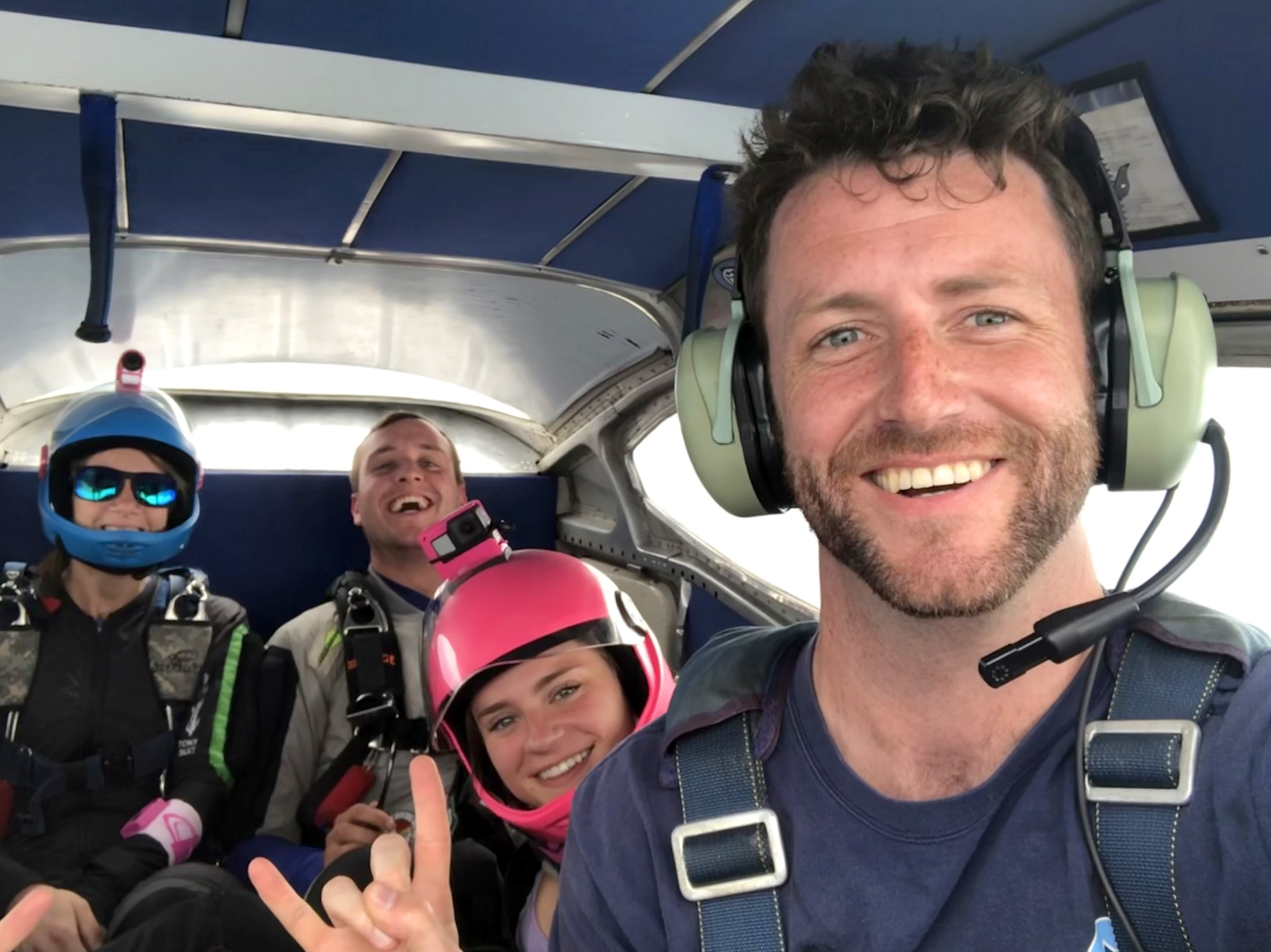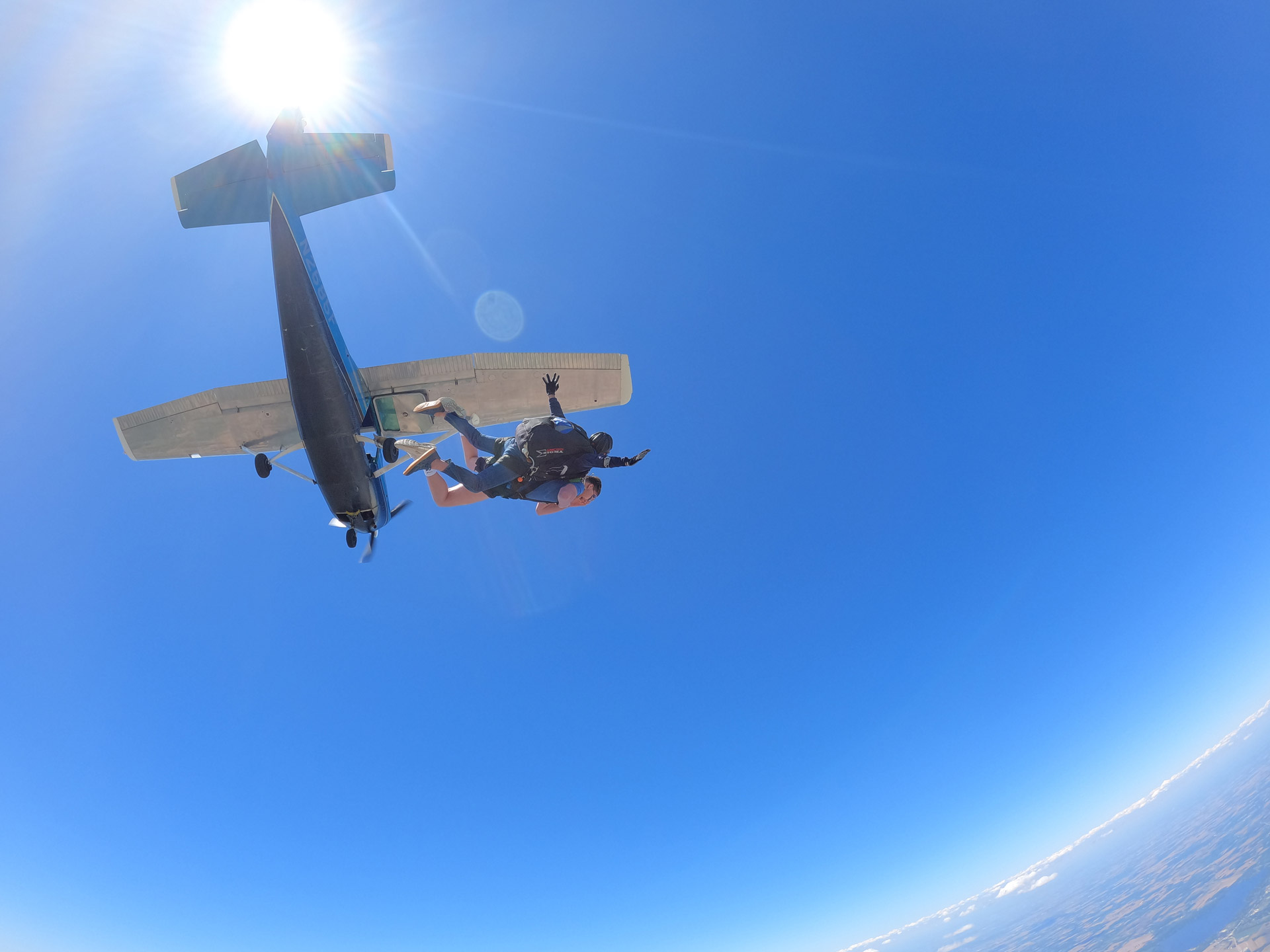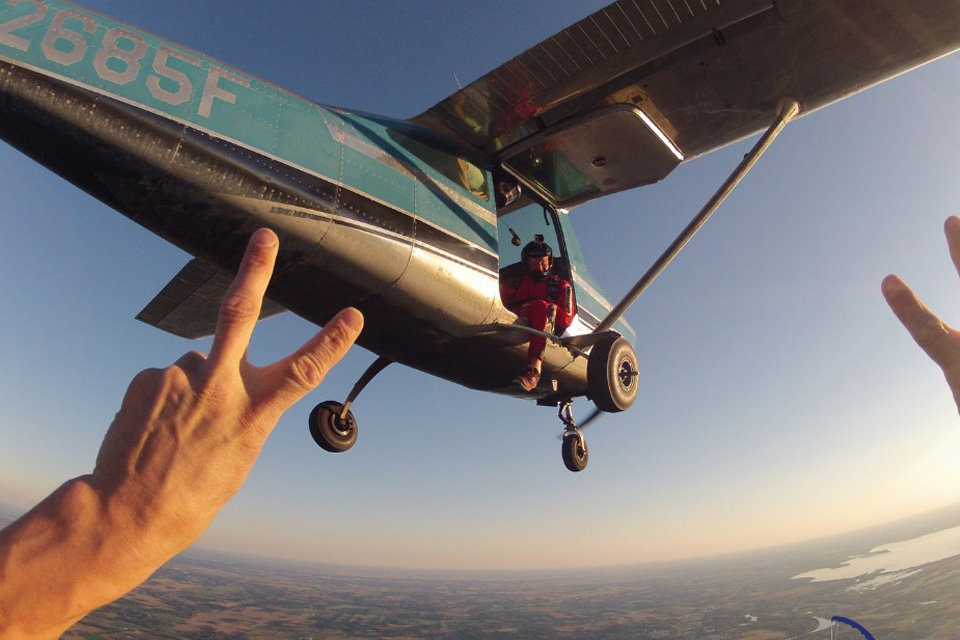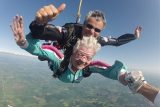A Day in the Life of a Jumper Pilot
General
Posted by: Wisconsin Skydiving Center 2 years ago
Are you a low-time pilot with a passion for adventure and looking to turn your flight hours into a life-changing experience?
Wisconsin Skydiving Center warmly welcomes you to consider becoming a part of our sky fam! Let’s take a peek into a day in the life of a jumper pilot at our dropzone and explore the exciting responsibilities and unique experiences that come with flying skydiving planes.

A Day in the Life of a Skydiving Pilot
A jump pilot job can be a lifetime gig or a stepping stone onto a career path as a commercial pilot. Whatever the case, here is a glimpse into the life of a jumper pilot:
1. Pre-Flight Preparation
The day of a skydiving pilot begins with a thorough check of the weather conditions to ensure smooth skydiving operations throughout the day. The pilot will conduct a pre-flight inspection of the skydiving plane to ensure it is in optimal working condition.
Before takeoff, the pilot will gather with other dropzone team members, ground crew, and manifest staff to outline the day’s plan. The discussion will include load schedules, the number of students scheduled for the day, exit altitudes, and any other specific instructions for the day’s jumps. Safety always takes priority when performing pre-flight inspections, orchestrating jump schedules, and making the weather assessment.
2. Aircraft Operations
With the groundwork laid, the jump pilot will chart the course to reach the desired jump altitude and coordinate with air traffic control to secure any necessary clearances. One of the most important (and most challenging) jobs of the jumper pilot is ensuring “the spot” is correct. This is done by reading winds aloft, determining freefall/parachute drift, altitude, and distance from the landing area – it’s almost like an art form!
When the loads are called to the loading area, the ground crew will help load the aircraft with excited skydivers. The takeoff is a moment of anticipation as the propellers hum, the skydiving plane climbs, and you hear the chatter of eager jumpers on the way to achieve their dreams of reaching for the clouds! It’s important for the jump pilot to remember to follow important pre-flight checklists before taking off … every … single … time.
At takeoff, the jumper pilot will ascend to the altitude that has been predetermined to accommodate the kind of jumps the skydivers on board have paid for and the equipment being used.
3. Skydiving Operations
Skydiving pilots are responsible for the safety of the skydivers in the aircraft and must respond to any emergencies or unusual situations. They will often communicate with skydivers in the plane to coordinate exit altitudes and ensure that everyone is ready.
Once jump altitude is reached, the pilot will maintain a steady course and speed. And then it’s green light, GO! This is when the magic happens. Skydivers will exit the plane like liberated spirits, each jump a unique expression of freedom that YOU get to witness.
Flying skydivers is a totally different ball game when compared to flying a commercial airplane; jumper pilots must keep the plane balanced, on heading, and with consistent speed all while adjusting to people moving around in the back and varied amounts of weight suddenly jumping out of the door every few seconds. This may involve multiple passes for different groups of jumpers in order to maintain a safe airspace.

4. Landing
After the completion of all jumps, the pilot will call “jumpers away!” on the radio to alert the ground crew and air traffic. The pilot returns to the dropzone while keeping an eye out for skydivers landing below and all around them – it’s an incredible sight to see! The pilot will stay in communication with the ground crew for when it’s time for the next load.
Depending on the manifest, the pilot’s day will be filled with multiple loads and unforgettable memories. On a busy day, a jump pilot will take off and land every 15 to 20 minutes while constantly adjusting for changing wind conditions. The dropzone becomes a well-orchestrated symphony between coordinating jump schedules, fueling, and adjusting the spot for optimal skydiving operations.
5. Post-Flight Duties
After the last jump, the focus shifts back to how the day started: on the aircraft. Post-flight inspections and maintenance ensure the skydiving plane is ready for the next day of jump operations. There may be some light paperwork and record-keeping involved in documenting the day’s flights, jumpers, or anything else to note.
The pilot may debrief with the skydiving team and ground crew to discuss any issues or areas to adjust for the future. Even after more than 25 years in business, at Wisconsin Skydiving Center we are always looking for ways to improve skydiving operations in order to provide the very best customer experience.
6. Rest and Repeat
We won’t sugar-coat it, during the busy season skydiving pilots often work long days and irregular hours. It can require a bit of tenacity at times. But with a skydiving pilot’s day consumed by a mix of adrenaline-pumping moments in the sky, careful attention to detail on the ground, constant consideration of safety measures, and mindful collaboration with skydivers and ground crew, the day seems to zip by.

Is Becoming a Skydiving Pilot Right for You?
Think you have what it takes to be a jump pilot? Here are some specific traits that will help you thrive in the cockpit:
Commitment to Safety
Above all, a commitment to safety is absolutely non-negotiable. Jump pilots play a crucial role in ensuring a safe and enjoyable experience for all.
Passion for Adventure
Does the thought of skydiving get your heart pumping (in a good way)? Jump pilots should have a genuine enthusiasm for the thrill of adventure.
Quick Decision-Making Skills
Every second is a decision that should be able to be made swiftly and wisely with ease.
Attention to Detail
Meticulous attention to detail is necessary for pre-flight inspections, flight planning, and overall safety.
Team Player
Jump pilots must be able to collaborate and work well with ground crew, skydivers, students, and customers. Maintaining patience and empathy even in high-stress situations is key.
Adaptability
Skydiving is a dance with the winds and elements; be ready to expect the unexpected! Jump pilots must be adaptable to changing plans and schedules should anything come up.

Join the Wisconsin Skydiving Center Team!
If you fit the bill and are eager to explore jump pilot jobs, Wisconsin Skydiving Center might be your gateway to greatness. Many of our pilots build up flight time in order to move on to bigger skies, and so jump pilot positions are often available.
At Wisconsin Skydiving Center, we fly Cessna 182 aircraft that we meticulously maintain. We have a full-time Airframe and Powerplant (A&P) mechanic on staff, as well as some of the most incredible people you’ll ever meet. Who knows where you’ll go from here!
Qualified candidates must have Single Engine Commercial, Instrument Rating, and a willingness to learn. Candidates cannot weigh more than 180 lbs due to weight and balance requirements for the aircraft. In accordance with our team culture, we recruit team members who are passionate, enthusiastic, humble, reliable, honest, respectful, empathetic, and live with integrity and a collaborative spirit.
If this opportunity resonates with you, apply online or connect with DZO Bo Babovic directly by phone or by email for more information.
Categories:
You May Be Interested In:

Can You Skydive Into Water?
1 month ago by Wisconsin Skydiving Center

Staff Spotlight: Dario Meloni
1 month ago by Wisconsin Skydiving Center

Can You Skydive With Dentures?
2 months ago by Wisconsin Skydiving Center

Does Skydiving Change Your Life? 5 Powerful Ways It Can.
2 months ago by Wisconsin Skydiving Center